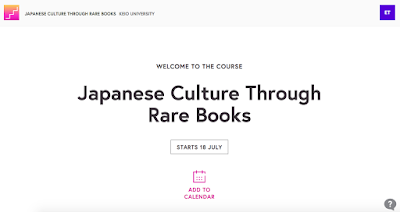Hello everyone! I was reading RocketNews24 recently, and I saw an article about this really interesting MOOC. Obviously, I signed up for it, though I have no idea if I can finish it because it’s going to be exam season. But, I thought that you guys might be interested in taking it, so here it is:
Learn about bookbinding styles and their influence on Japanese literature
In the first week of the course, you will be introduced to the main bookbinding methods used in traditional Asia, and to the practice of rebinding books. We will also discuss the influence of Chinese bookbinding methods on early Japanese books in all their various shapes and forms.
Explore old Japanese manuscripts and illustrated books in high-resolution images and videos
In the second week of the course, we will focus primarily on the different types of manuscripts and illustrated books that were used for waka (classical Japanese poetry) and prose tales (monogatari) from the 9th century through the 17th century. High quality images and video recordings of materials in Keio University’s book collection and beyond will give you a real sense of the look and feel of these precious objects.
Discover the role of book publishing in the development of Japanese literature and scholarship
In the final week of this course, we will look at how the introduction of movable-type and woodblock printing in the 17th and 18th centuries helped books spread widely across social classes, and how this democratization of books affected Edo culture and learning.
The course is in English, and it’s an introductory course, so even know you know nothing about Japanese literature, you should be able to follow along. It starts in two days, and it’s supposed to take 3 hours a week, lasting for three weeks.
I also looked around the site, and I also found this course!
You can find it at this link.
From the course description:
Thanks to the impact of ‘globalisation’ people in the West are growing more and more interested in voices from East Asian culture. But familiarity with Western philosophy doesn’t always mean an accurate understanding of its Asian counterpart.
So what does the “Asian counterpart” of Western philosophy actually refer to? Confucianism? Daoism? Different schools of Buddhism like Theravada Buddhism or Mahayana Buddhism? And how do we understand each of them? This course will help you answer some of these questions.
Get an easy introduction to East Asian philosophy
Although English material on Asian perspectives can be easily found in the West, readers are often immediately frustrated by difficult terminology borrowed from classical Chinese/Sanskrit, along with the lack of explicit argument. So – is there any shortcut for accessing Asian philosophy without the burden of studying sinology or Indology? The answer is: yes. Contemporary Japanese philosophy offers such a shortcut.
Compared with Chinese philosophy, Japanese philosophical texts are more analytically organised, allowing for them to be more easily interpreted in terms of Anglophone philosophy.
In fact contemporary Japanese philosophers like Nishida Kitarō, Kuki Shuzō and Wastuji Tetsurō systematically introduced Western philosophical terminologies into their own theoretical work, so their works are more readable for a Western audience than classical Asian texts like The Book of Change.
Understand Japanese philosophical problems
This course is designed to help a largely Western audience explore philosophical problems through a Japanese lens, without needing to know Japanese or any Japanese philosophers. Throughout the course you’ll will become acquainted with the Japanese way of doing philosophy and you’ll unpack Asian ways of thinking.
Many of the philosophical problems addressed in this course are actually widely discussed in the Western tradition of philosophy, so a basic sense of what Western philosophy is can be useful as these are problems that are often re-introduced in the context of Japanese culture.
In addition, this course will also offer you a chance to re-evaluate your own philosophical assumptions by comparing them with their Japanese counterparts. Using these comparisons you’ll widen your own theoretical horizon when considering fundamental problems in philosophy.
Get an insight into Asian Culture
Japanese culture is, by its nature, a hybrid of nearly all Asian cultures outside Japan. This means the study of Japanese culture in some ways offers a ‘package solution’ to the study of Asian culture in a more general sense. This course will offer you an taste of this culture as well as insight into Japanese philosophy.
It’s supposed to start sometime this year, so hopefully I’ll be able to take it. It’s also supposed to be accessible to beginners, so definitely sign up if you have an interest!


